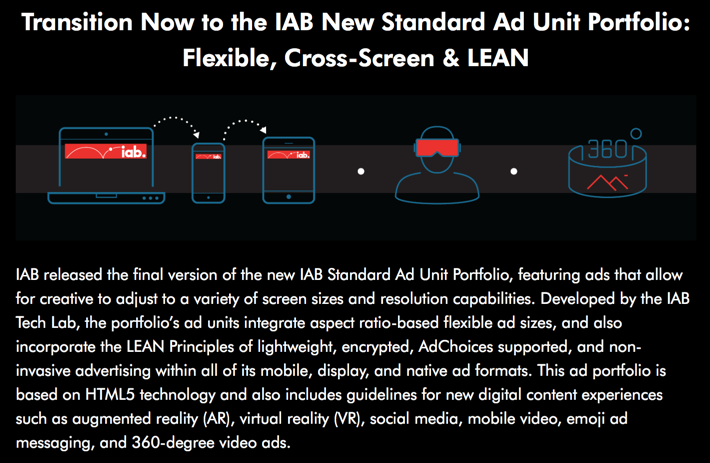7 Tips for Maximizing Your Display Advertising

7 Tips for Maximizing Your Display Advertising
The practice of display advertising has undergone several noticeable changes in 2018. This article will explore recent and future trends in display advertising strategies and discuss some of the best practices for maximizing display advertising spend.
In an increasingly digital world, where everyone’s eyes are glued to devices, most display advertising can seem like nothing more than white noise.
Digital display advertising is a form of pay-per-click advertising. These advertisements, commonly referred to as “banner ads,” come in a variety of sizes and can be featured anywhere on a webpage.
As opposed to traditional paid search advertisements, which are text-based ads placed within search engine results, display advertisements appear on the websites that are listed in those results pages and relevant to your product or service. For example, display ads placed within the Google Display Network will appear on various types of sites, including blogs, news sites, Gmail access, and YouTube.
The ubiquitous nature of digital display advertisements makes it difficult for any one business to stand out in the crowd, so you want to make sure you’re designing and promoting well-crafted ads in in the right places to maximize ROI.
This article will explore some of digital display advertising’s biggest changes, as well as what’s on the horizon in 2018 and beyond.
Below are some tips for maximizing your digital display advertising in 2018:
- Implement an Authentic, Mobile-First Strategy
- Use a Data-Driven Approach
- Seek Outside Marketing Expertise
- Take Advantage of the Popularity of Video Content
- Use Social Media Platforms to Experiment
- Emphasize Multidevice Design
- Capture Short Attention Spans
Lastly, we will will discuss the properties of successful display ad creative.
Implement an Authentic, Mobile-First Strategy
Changes in customers’ behaviors and demands are primarily driving changes in display advertising strategy. Advertisers must use an honest and mobile-first approach to stay ahead.
For example, most forward-thinking digital marketers have made a proactive shift to mobile advertising knowing that desktop advertising is expected to decrease by 6% or more in 2018. More than 87% of internet users access the web on a regular basis using a mobile device.
Despite the platform shift, targeted digital display ads continue to be a booming strategy, with U.S. advertisers estimated to spend $49 billion on display ads in 2018. Those ad dollars, however, aren’t guaranteed ROI because consumers have developed some trust issues.
A recent study acknowledged concerns about advertising content being mistaken as "fake news," as well as the need for advertisers to be transparent with their outreach efforts. That means that marketers can expect to see a shift in how digital display ads are created and shared with the public.
Use a Data-Driven Approach
Advertisers increasingly want empirical data regarding the ad buying process, such as where ad dollars are spent and who ends up seeing those ads. Many experts expect a shift in ad spend to more private platforms (e.g., Facebook, Google, Twitter) that can better focus on contextual targeting and direct engagement with social media.
Contextual targeting allows marketers to place their ads precisely based on fine-tuned demographics and/or psychographics. This data-driven approach targets the right ad to the right person at the right time.
The practice of hoping for display ad impressions based upon basic location data and browsing history is no longer sustainable.
Seek Outside Marketing Expertise
Concerns regarding brand safety and public image grow for marketers. Businesses need to understand the value of collaborating with advertising and marketing experts in order to gain authenticity and receive the best advertising guidance.
Automated systems that follow a potential prospect’s digital trail may initiate ads on unsavory websites that can damage an advertiser’s credibility. Display ad automation can also make the mistake of posting content at the wrong time, such as during unfolding news events. For example, an advertisement for a weapons firing range may appear during breaking news coverage of a shooting, which would be in extremely bad taste.
Marketers need to use the right partner—like an advertising agency—to boost display ad relevance and overall effectiveness. This smarter ad buy approach can reach the desired audience at the right time and on the right platform.
Take Advantage of the Popularity of Video Content
While display advertising is viewed as a “tried and true” ad format, video is emerging as a “go-to” awareness tactic. Video ads have proven to return stronger performance and engagement metrics.
Marketers and advertisers are seeking to produce more video display ads because of the continued growth of platforms like YouTube, Netflix, and Amazon Prime. Meanwhile, Facebook has begun to revamp its video advertising capabilities to attract ad buys.

It is unclear how audiences will react to major increases in visual content. Currently, the cost per thousand impressions (CPM) for video ads is high, but that could change if interest and audience engagement decreases due to video ad overkill.
Although video content is on the increase, it could be years before advertisers see the true ROI of the video ad trend.
Use Social Media Platforms to Experiment
Social media is a hot platform because of its rich audience targeting. According to one study, 39% of U.S. digital video ad spending targets Facebook, while 27% makes its way to YouTube.
With built-in metrics and third-party analytics freely available to measure the value of advertising outreach, marketers are flocking to social media with their ad budgets. Facebook’s 1.5 billion users draws marketers in and the numbers certainly don’t lie when it comes to the social media giant’s advertising appeal.
A major draw for social media advertising is the ability to target a message based on age, gender, education, interests, and location. It's quick and easy to push out ads—with just a few clicks, a digital display ad can go to a Facebook feed, Facebook Messenger, and Instagram.
Any advertiser planning to run display ads in 2018 needs to leverage the Facebook Custom Audience option. This feature will allow a business to use an existing customer’s data to retarget similar Facebook users.
Additionally, services like Google’s Display Network and Twitter Ads can help advertisers find the right audience. Both offer plenty of guidance and tips for running a successful display ad campaign on their respective platforms.

One of the network’s “perks” is that Google runs ads on more than 2 million websites and in more than 650,000 apps, making it easy to reach the target audience on any device.
Social media also makes a perfect testing ground for ads since social media users expect to see ads on their preferred platform(s). In fact, HootSuite – a social media monitoring and scheduling provider – recommends beta testing potential ads as social media posts to gauge what resonates with an audience before spending any portion of your valuable ad budget.
Emphasize Multidevice Design
Marketers who are digitally savvy understand the importance of designing ads with smaller mobile screens in mind. What looks good on your full-size desktop computer may not translate to a smartphone.
To capitalize on this trend, the Internet Advertising Bureau (IAB) released a new IAB Standard Ad Unit Portfolio with ads that allow for creative to adjust to a variety of screen sizes and resolution capabilities.

The portfolio offers flexibility and incorporates the LEAN Principles (Lightweight, Encrypted, AdChoices supported, and Non-invasive) of advertising within all mobile, display, and native ad formats.
Digital display ads need to be highly visual and use photography, video, and graphics to stand out from text-based ads. These types of ads should be more prominent and visible to the targets to maximize effectiveness and increase ROI.
Capture Short Attention Spans
Another very effective strategy is to use display ads as channels for branding instead of direct-response vehicles. A display ad should be thought of in the same manner as a billboard along the highway; it should get attention quickly with a minimum amount of information.
A display ad needs to convey the brand’s message in less than three seconds. If it takes longer to grasp the message, the viewer may move on without taking any action.
Also, the digital display ad needs to look like an ad. While native ads can be less disruptive on the page, digital display ads should be deliberately unsubtle in order to attract attention. The IAB guidelines say that display ads should be “clearly distinguishable from normal web page content” with defined borders.
Remember, the best way to differentiate your message, and maximize your ROI, is for your ad to stand out in the crowd.
The Properties of Successful Ad Creative
The most powerful and successful display ads accomplish the following:
- Clearly define the brand name and message
- Advertise only one product or service so to not confuse the user
- Resonate better with audiences through the use of simplistic messages
- Use high resolution, uncluttered visuals for easier comprehension
Finally, branding and messaging must be consistent across all campaign efforts, especially if display ads are just one element of a larger marketing initiative.

This requires seemingly extraneous details to be in sync, such as colors, fonts, themes, messages, and calls to action.
Further Reading: How Often Should You Run PPC Campaigns?
Moving Forward With Your Display Ad Strategy
With digital display ad trends on the rise, now is the time to increase that line item in your ad spend budget.
Display advertising can help advertisers reach a targeted customer base, drive engagement, and gain visitors and/or customers. Navigating digital display advertising can be complicated, which often scares marketers away.
Despite the potential pitfalls, display advertising continues to grow and evolve. By instituting measurable campaign goals, creating compelling ads, and using a data-driven approach, an advertiser can see a significant ROI in a short amount of time.
